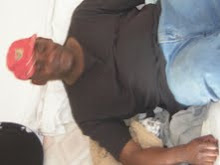
By OMOSEYE BOLAJI
(Right) Emily Hobhouse
The questions were coming in thick and fast, and I could hardly cope. And to think many would dub this small South African town, Hobhouse, a “backwater"!
"This is a pleasant surprise Mr Bolaji, you say this is your first visit to Hobhouse. Do you know we are a proud agricultural town?" A resident of the town enthused.I had been invited to Hobhouse by a group of writers who told me they would be “honoured "if I could visit them, and happily enough, I managed to do so.
It was a small, multicultural ensemble comprising blacks, “coloureds," and a couple of whites. The love for literature united them all, here at Hobhouse. The workshop had been interesting, and now it was time for me to be grilled! Yes, the questions were coming in thick and fast.
Another: “Mr Bolaji, we’ve read so much about how you’ve been sick over the last few years, yet you look so fresh, even big. Are you back to form? Have you overcome your health problems? Then why have you not written any major fiction for almost two years now?"
Another question: “We understand a few years ago you visited another small town, Ladybrand, and you were inspired to write your brilliant work of fiction, ‘Tebogo and the Haka’ which is based on Ladybrand. Will your visit here inspire you to write a mystery story based on Hobhouse?"
Yet another..."Do you know why this town is called Hobhouse? Do you know who it is named after?" “Of course he does," one of them answered for me. “Who does not know about the famed Emily Hobhouse?"
Indeed I knew about her; Emily Hobhouse, the British lady who had selflessly campaigned to improve the horrific lot of Boer women and children, during the Boer war in South Africa over a hundred years ago. Hobhouse had written and campaigned so lucidly and graphically in favour of the hapless victims, and somewhat precipitated changes. She has since remained a celebrated hero in South Africa, especially with the Afrikaaner (Boer/white) people.
I said a few words about Emily Hobhouse to them, expressed how much I admired her integrity, humaneness, empathy and resilience. Then I added: “Actually that’s one of the main reasons I came here. Hobhouse is some sort of vicarious kindred spirit to me as a Nigerian. She always reminds me of Mary Slessor,"
“Mary Slessor?" they queried. Apparently, nobody knew her here. The irony of world history! A personality might be celebrated in one area, but virtually unknown elsewhere. Like Hobhouse, Slessor was a British lady who travelled to Nigeria over a hundred years ago, campaigned against the killing of twins among the Efik. She is generally regarded as “an angel of mercy" (like Hobhouse) because she precipitated many positive things.
So I told them about Mary Slessor and her deeds in Nigeria over a hundred years ago. I did not forget to tell them that one of her major legacies was being a major catalyst behind the establishment of the Hope Waddell Training Institute in Nigeria, a magnificent institution which at its peak was the best in West Africa.
“Hmm...We certainly must do our research on Mary Slessor," some of them said. “So Slessor, another lady from Britain – was like our Hobhouse. Both did a lot for African communities, and the people on ground. Their legacies are still living on,"
And so it does. Both of them are celebrated by millions of Africans; in Nigeria and West Africa, for example, millions of youngsters learn about the exploits of Mary Slessor from a very young age in schools.
As the question-and-answer session petered to an end, it struck me that indeed certain people have made their indelible mark on the world. Here I was at Hobhouse, a town named after a remarkable Englishwoman, Emily Hobhouse. This for me, adumbrated the life and times of Mary Slessor, who has also been immortalised, for example on Scottish stamps. Intriguing.

No comments:
Post a Comment